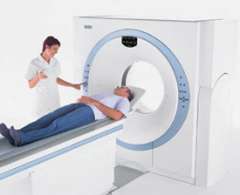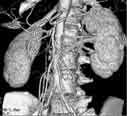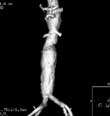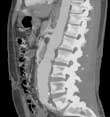CT Angiography
Find your care
Our interventional neuroradiology team has paved the way for interventional procedures, creating several of the devices and techniques widely used today. Call 310-267-8761 to learn more about our services.
Computed Tomography Angiography (CTA)

- What is CT Angiography?
- How does the procedure work?
- What are some common uses of the procedure?
- What are the benefits vs. risks?
What is CT Angiography?
CT (computed tomography) angiography (CTA) is a medical test performed using computed tomography and an intravenous injection of contrast material to produce detailed images of arteries. Most patients undergo CT angiography without being admitted to a hospital.

How does the procedure work?
These images are acquired in a conventional CT scanner using a technology that synchronizes the acquisition of the images with the injection of an intravenous contrast material in such a way that the bolus of contrast is visualized while it transits the arteries of the specific organ or segment being studied. Then the images are processed to allow three-dimensional reconstructions for further manipulation and/or therapeutic planning.
What are some common uses of the procedure?


Different to regular angiograms, CTA does not require selective catheterization of the arteries. In other words no punctures of arteries are necessary. In addition to the visualization of arteries and their branches, CTA renders depictions of the bone structures and to some extent other soft tissues. This feature is very important in the evaluation of conditions such as carotid stenosis, intra and extracranial atherosclerosis, and aneurysms.
What are the benefits of this procedure?
The high quality of these images and elevated speed of acquisition allow the examination of large sections of the body in just few seconds with a great amount of detail. This degree of detail makes CTA a very valuable tool for the planning of both surgical and minimally invasive vascular procedures and for the diagnosis and follow-up of wide spectrum of cerebrovascular diseases.
Additional Information and Resources
- American Stroke Association: http://www.strokeassociation.org
- National Stroke Association: http://www.stroke.org